As the summer starts to dwindle, so do our gardens. But that doesn’t have to be the case for your garden, as late summer is actually a great time for late blooming perennials to shine. There are many great varieties available that will bring color to your garden when everything else starts to fade at the end of summer.
Late blooming perennials are a great late season food source for wildlife, especially those who are preparing to migrate or hunker down for the winter. Many of the perennials that we’d like to highlight here are low maintenance and full of color, perfect for admiring while you sip that first, much anticipated, pumpkin spice latte of the season.
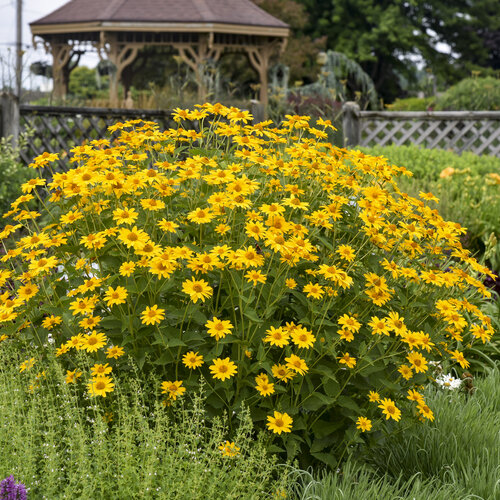
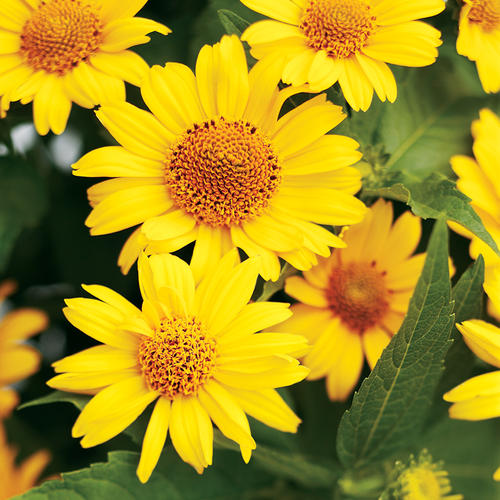
Heliopsis “Tuscan Sun”
This cheerful plant is made of bright, golden-yellow flowers with an orange-gold button center. It can get up to 36 inches tall and loves a spot with plenty of sun. Butterflies and bees will really dig this one, as it provides a great late summer food source. It also makes for a great cut flower that can brighten up any flower arrangement.
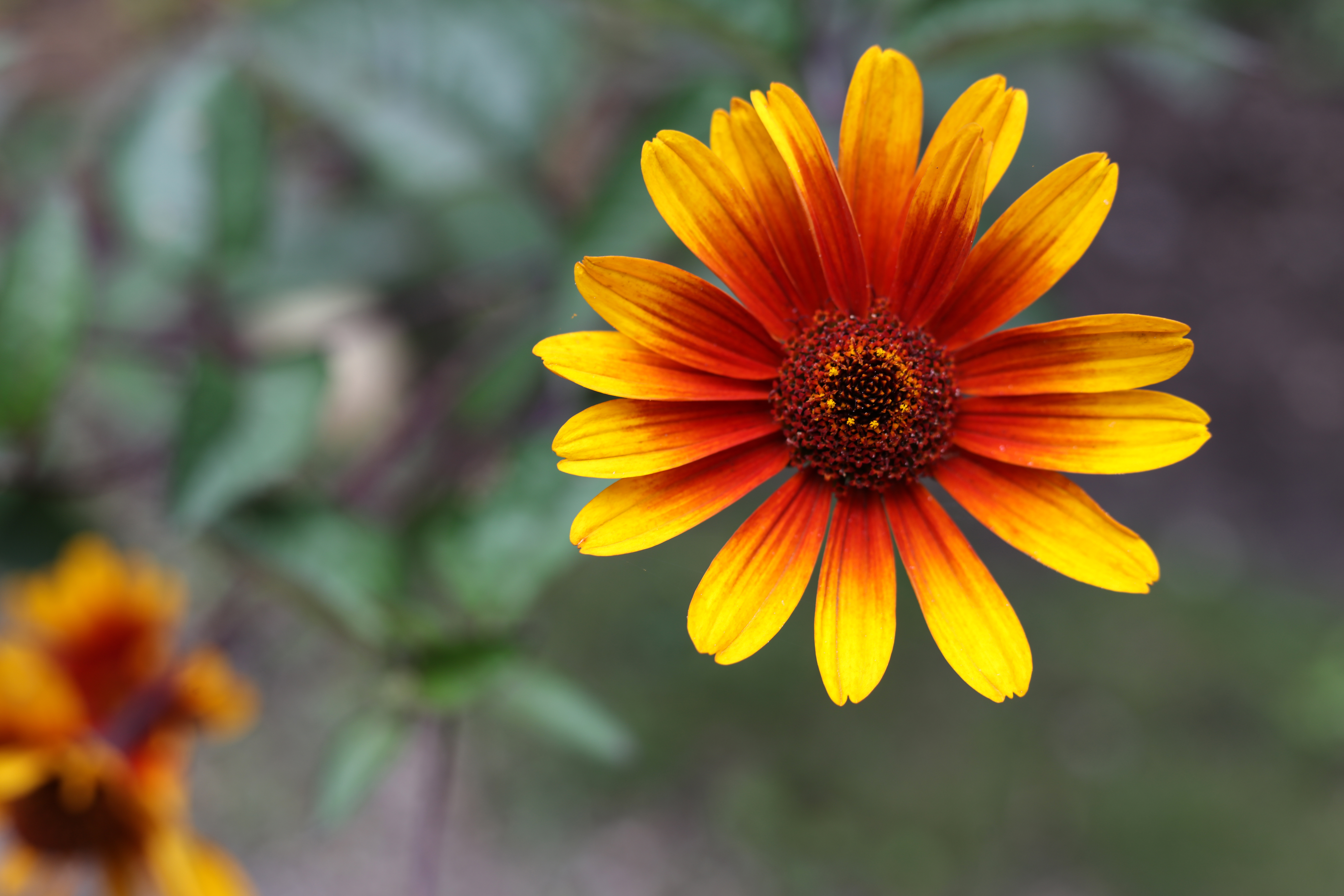
Burning Hearts
The “Burning Heart” is another type of heliopsis, slightly different than its “Tuscan Sun” cousin mentioned above. This daisy-like flower is also golden-yellow but with a fiery red-orange coloration that really pops in mid-summer and into the fall. The distinct purple-tinged foliage on this Heliopsis provides something extra to any garden space. This one also grows up to 36 inches and loves the sunshine. So, forget the antacids and let your heart burn over this beloved beauty.


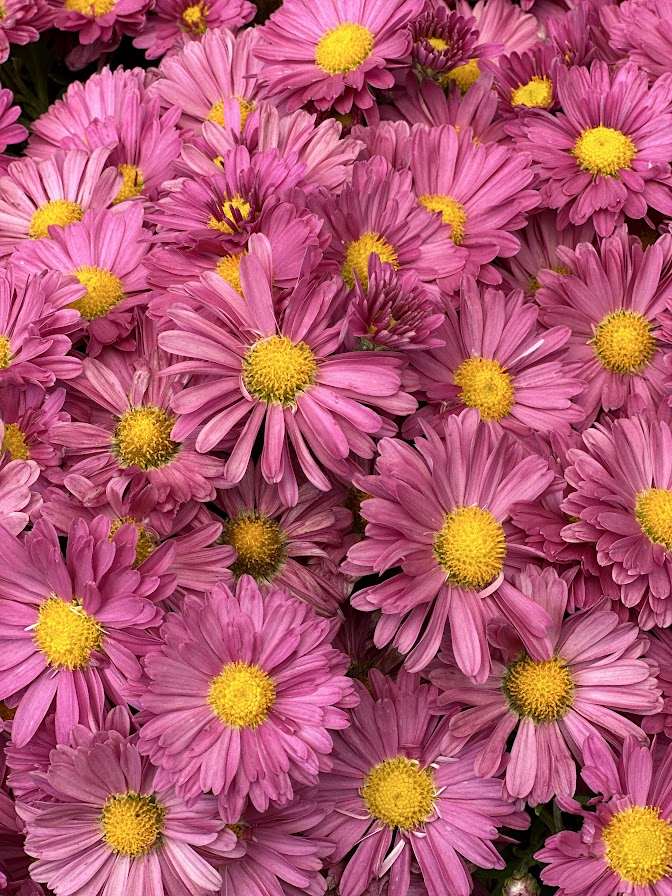
Mammoth Mums
These fall show-stoppers are a hardy member of the daisy family that bloom in September and October. Paring this perennial with early bloomers is the perfect way to keep your garden full of color all season long. Garden mums prefer full sun but can handle a bit of shade. Pruning of the plant during the growing season before buds appear can promote a fuller, more bushy appearance and help to delay the blooms until later in the season. Mums require a lot of water throughout the entire growing season, especially when the flowers begin to open.
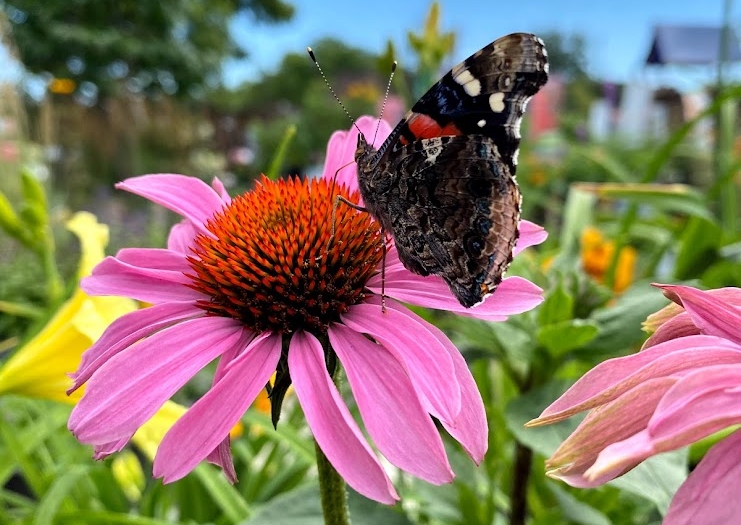
Echinacea
These beloved perennials known as Coneflowers to most, are native to prairies and open woodlands and a favorite plant for pollinators and birds. With both a long-lasting bloom time from summer to fall and a variety of colors, there are endless ways to utilize this perennial in your garden space. Echinacea prefer full sun and well-drained soil to thrive, so pair them with other plants with similar needs but different blooming times for year-round color. Whether you are looking to add some height or edge borders and pathways, these plants come in a variety of heights to suit your needs. Pair them with other long-lasting flowers in a cutting garden to keep your vases full late into the season.
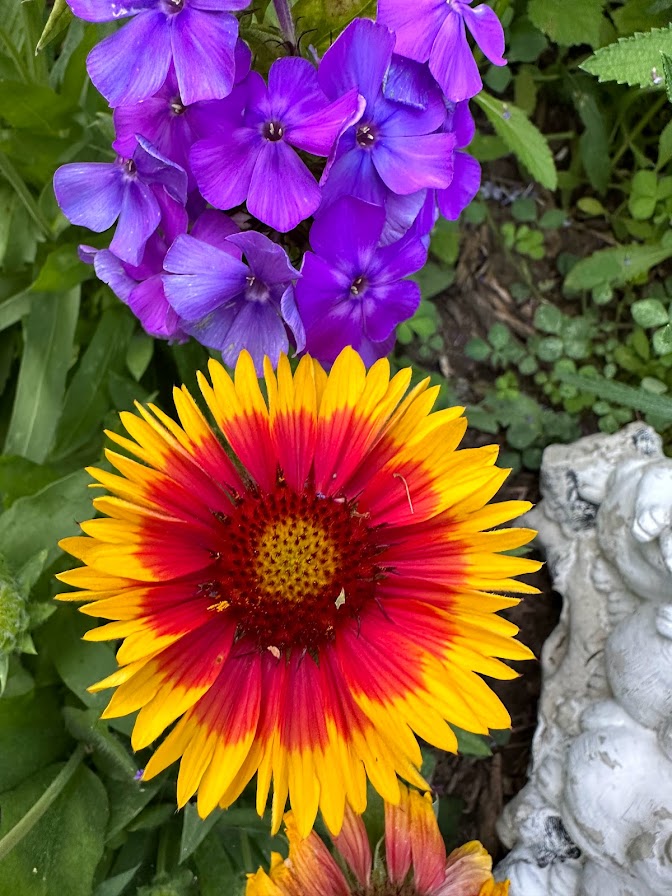


Gaillardia
Otherwise known as Blanket Flowers, Gaillardia have stunning, fringed flowers in reds and yellows and are drought and heat tolerant. Depending on the variety, the flower is either shaped in a classic daisy form or filled with trumpet shaped petals. All types of Gaillardias like full sun and sandy, quick-draining soil. These perennials are heavy bloomers and tend to burn themselves out after only a few years, but you can help prolong their lifespan by deadheading before the flowers go to seed.
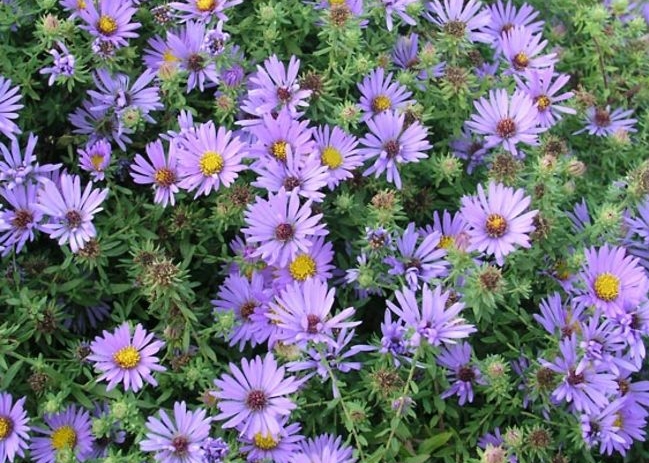
Aster “October Skies”
This low growing, mounding perennial provides a great source of late season color with its cute little sky-blue daisy-like flower with a yellow center. This aster is easy to grow as it is can tolerate both drought and less than desirable soil. The perfect late season snack for butterflies and pollinators alike. Pinching back the stems before midsummer will help to produce more blooms and avoid the dreaded “flop” of a leggy, overgrown plant. Asters will re-seed on their own terms, so if that’s not what you want, cut them back after they are done flowering in late fall. These aromatic blooms are a dainty addition to any garden or cut flower arrangement.


Tall Garden Phlox
If you are looking for a great late season bloomer that will add some dramatic height and brilliance to your garden space, look no further. The tall garden phlox are available in a wide range of colors and can grow up to 3 feet tall, with some varieties getting slightly taller. Phlox grow best in full sunlight but will tolerate a small amount of shade. These hardy and vigorous plants will thrive with proper care, such as good air circulation and adequate moisture. Some cultivars will start to bloom mid-summer while others not until late in August.
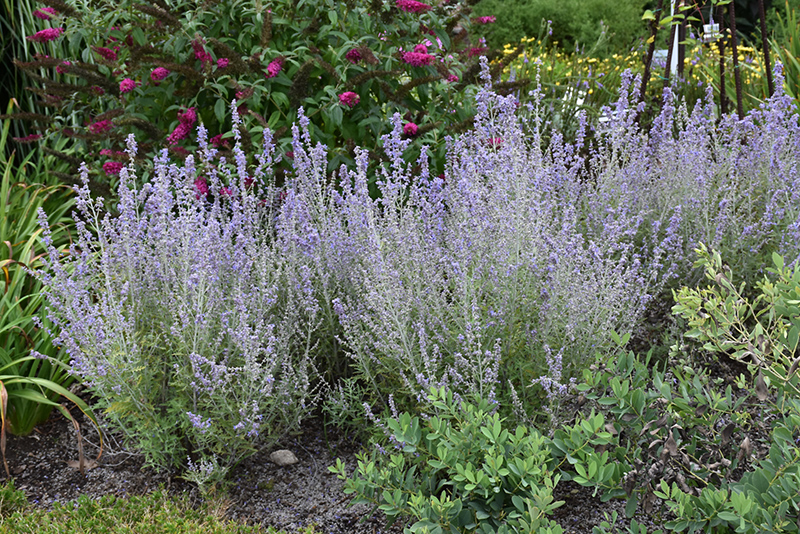
Russian Sage
Russian sage is an easy to grow woody perennial that are a favorite of hummingbirds, bees, and butterflies. The airy, lavender-blue, long-lasting flowers will not disappoint as they bloom from mid-summer into fall. Paired with the unique flowers, its silvery-green leaves will add an element of texture that you will love. As most varieties reach 2-3 feet tall, these perennials can be used to add height or to create a hedge. Once established, Russian sage is drought and heat tolerant and actually thrives in hot, dry conditions with full sun. You can wait to cut these plants back until the spring if you are looking to incorporate some winter interest.

Anemone robustissima-Japanese anemone
These Japanese anemones have adorable, pink, cup-shaped flowers with reddish stems. Even though they appear delicate, they are vigorous, adaptable, and hardy plants once they are established. These deer and rabbit resistant plants will get 3-4 feet tall and are a popular choice for borders and naturalistic areas. They can become somewhat unruly in garden beds so make sure you plant them in an area with plenty of room to spread! Give these plants plenty of sun along with rich, moist soil and they will not disappoint.
Looking for late-blooming natives? We got you covered.
Here are some of our favorites:

Goldenrod (Stiff and Showy)
The quintessential end of season wildflower that we’ve all seen growing in meadows, prairies, and roadside ditches. Another favorite of pollinators, its small bright yellow flowers grow in dense clusters. Stiff goldenrod is a very adaptable plant that can grow in virtually any type of soil, but does require full sun. To prevent self-seeding, prune back the spent flower heads on this one, as this type is known to spread more aggressively. The showy variety requires a bit dryer soil and grows huge, upright panicle-shaped flowers. Both of these types of goldenrod bloom late in the season, all the way into mid-fall.
Aster species
There are over 100 varieties of Asters that are native to North America. They vary in color, flower shape and location preference. Check out our native plant section for current varieties.
Blue Sage
Native to prairies, these perennials are perfect for wildflower meadows or native or butterfly gardens. They grow best in dry to average soils with full sun exposure. They will attract pollinators and beneficial insects, and provide a great food source for these visitors. The lovely blue flowers add a stunning contrast alongside other plants with warm-toned blooms. If you rub against these plants, you’ll notice the sweet smell typical of other Salvia species, making them deer and rabbit resistant. They can grow up to a whopping 5 feet tall so it is recommended to plant them next to grasses or other supportive neighbors and to avoid fertilizing if the soil is already rich.
Tall Bellflower
This is a biennial plant produces an arrangement of heart-shaped leaves radiating from the stem during its first year. In the following year, a tall stem will arise with oblong leaves and bright blue-violet blooms. Reaching a height of 5 feet tall, this plant prefers partial shade and medium soil moisture, perfect for woodland plantings. You’ll be seeing blooms all the way into October with this dramatic addition.
Helenium autumnale
Most commonly known as Sneezeweed, these daisy-like flowers have wedge-shaped petals that end with three lobes at the tip. They like moist soil and would be the perfect addition to a rain garden in need of some late season color. Certainly a stunning display when planted in masses, especially using a variety of colors. Don’t worry, these unique flowers won’t make you sneeze like the name suggests. The name comes from the historic crushing of dried leaves and flowerheads intended to cause sneezing to drive away evil spirits- yikes!
Find comfort in the fact that you have the power to prolong summer by mixing some of these late blooming perennials into your world. You put a lot of time and effort into your gardens so you should be able to enjoy them for as long as possible each season. And besides, better late than never! If you’d like even more ideas for late-blooming perennials, click here!
Happy fall gardening!
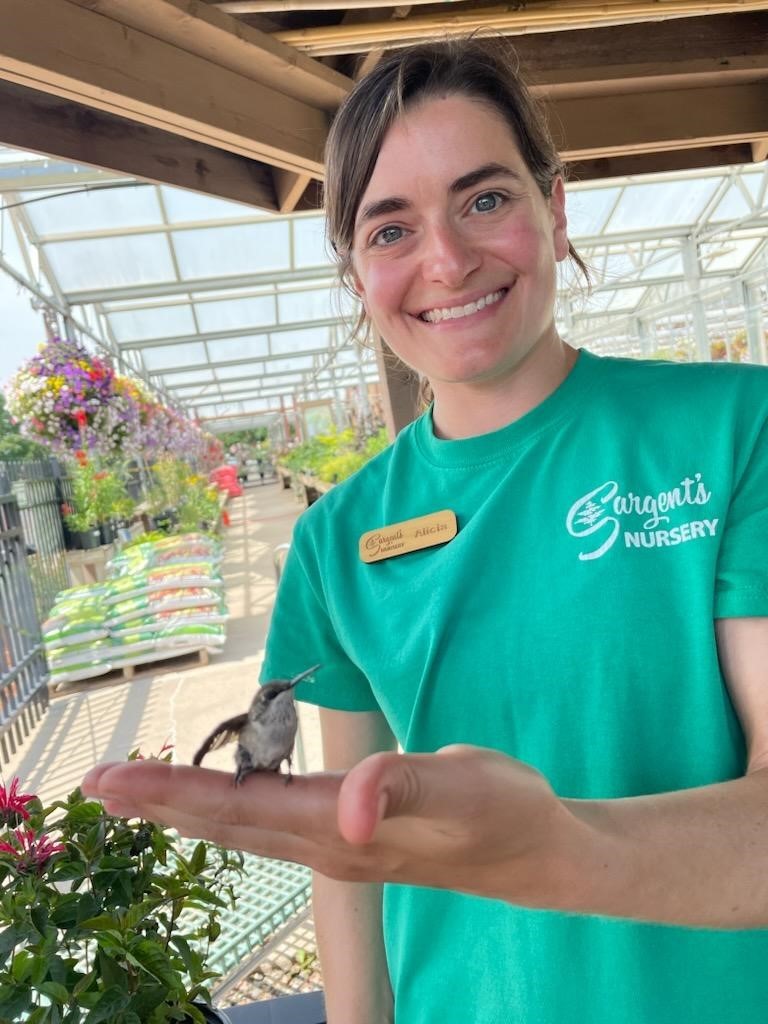
This blog post is brought to you by Alicia, an employee of Sargent’s Nursery, whom you may have seen watering annuals in the greenhouse in the past.
She now travels the country, excitedly sharing her knowledge and experiences in gardening with you. And hey, she even saved a hummingbird once with a sticky wing.
Check back for more from Alicia and come along for the ride!


